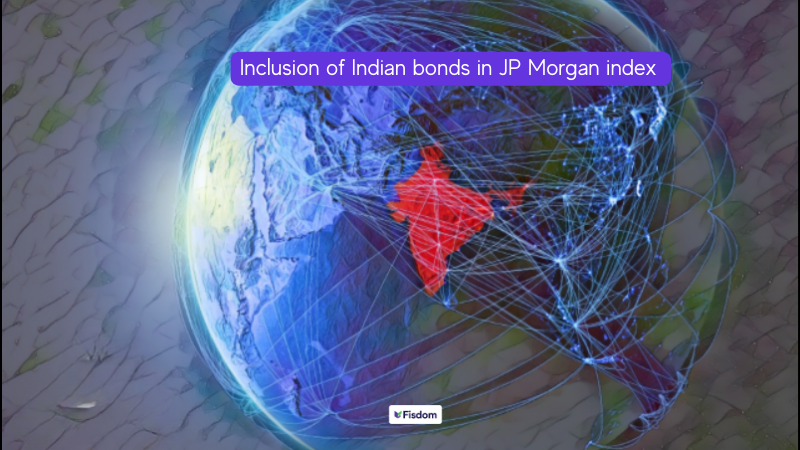
The push for digital India was against the backdrop of the aim to provide financial services to every person in the nation and include them in the progress of the nation. The government has consistently been working towards this aim through various schemes and programs ensuring that the financial benefits of the country reach the poorest and the remotest parts of India. Financial inclusion is an important step in this direction to provide secure, efficient, and timely access to the general public of the nation. Given here is the meaning of the term financial inclusion and related details of the same.
What is financial inclusion?
Financial inclusion refers to the provision of financial services to those who are traditionally excluded or underserved by the mainstream financial sector. This primarily includes low-income individuals, rural populations, and those without access to traditional banking services or financial models of the modern world. The goal of financial inclusion is to provide access to basic financial services such as savings, credit, insurance, and payments to people who need it, in order to improve their economic well-being and empower them to participate fully in the economy. Financial inclusion in India refers to the effort to provide access to basic financial services, such as savings accounts, credit, insurance, and payments, to those who are excluded or underserved by the traditional financial sector, particularly low-income individuals, rural populations, and the unbanked.
What is the importance of financial inclusion?
The budget of the country aims to provide many benefits to its citizens but till date, a major chunk of the population is away from its benefits. Financial inclusion is therefore crucial to ensure that these benefits are disbursed equally even to the remotest parts of the nation.
The importance of financial inclusion can be highlighted hereunder.
- Increased financial stability
Improved financial stability is the result of successful financial inclusion, as individuals have access to a range of financial products and services that can help them manage their finances more effectively. Greater transparency and accountability in the financial sector are also the direct benefit of financial inclusion against the backdrop of increased financial literacy. This is on account of more people having access to formal financial services and being able to participate in the financial system.
- Enhanced economic well-being
Access to the financial sector and its services can help people save money, and effectively employ the same. Funds can thereby be effectively used to plan for the future, and invest in education, health, and other assets that can be instrumental in improving their economic well-being. Access to formal financial services, such as savings accounts and insurance, can help people manage risk and build a safety net in case of emergencies.
- Improved access to financial markets
Financial inclusion is instrumental in increasing access to financial markets and providing opportunities for investment in different assets class through the organised segment of financial markets. India has recently seen a massive increase in the number of investors over the past couple of years. This continual inclusion can lead to economic growth and job creation.
- Reduced poverty
Financial inclusion allows people to be part of the organised financial sector and provides better access to credit and other financial services. This is essential for the masses to escape poverty and create a pathway to prosperity.
Overall, financial inclusion can help people participate fully in the economy, improve their standard of living, and build a more financially stable and inclusive society.
What are the top financial inclusion schemes in India?
The Indian government has taken several steps to promote financial inclusion in the country, including launching the Pradhan Mantri Jan Dhan Yojana (PMJDY) scheme, which aims to provide every household in India with a bank account and access to other financial services. The government has also promoted the use of technology, such as mobile banking and digital transactions, to reach remote and underserved populations. These initiatives aim to improve the economic well-being and financial stability of individuals and to bring the unbanked into the formal financial system.
Some of the top financial inclusion schemes in India include,
| Scheme | Description |
| Pradhan Mantri Jan Dhan Yojana | This is a national mission for financial inclusion initiated in 2014. The scheme aims to ensure easy access to financial services such as savings and deposit accounts, remittances, credit, insurance, and pension to every citizen of the country. |
| Pradhan Mantri Jeevan Jyoti Bima Yojana | A government-backed life insurance scheme for individuals with a savings bank account. |
| Pradhan Mantri Suraksha Bima Yojana | This is a government-backed insurance scheme that provides accidental death and disability insurance scheme for individuals with a savings bank account. |
| Pradhan Mantri Mudra Yojana | This scheme was launched in 2015 and provides micro-enterprise loans for small businesses and startups. |
| Aadhaar Enabled Payment System | This system of electronic payment was launched in 2010 and uses biometric identification to enable individuals to receive and make payments through their unique Aadhaar number. |
| Direct Benefit Transfer | This scheme was launched in 2010 and enables the government to directly transfer subsidies and other benefits to the bank accounts of beneficiaries. This scheme has been instrumental in reducing corruption and improving the efficiency of delivery. |
| Atal Pension Yojana | This scheme was initiated in 2015 and is a government-backed pension scheme for individuals in the unorganized sector, such as small farmers, self-employed individuals, and daily wage workers. |
Conclusion
Financial education, financial inclusion, and financial stability are three key elements of financial literacy that ultimately leads to the progress of a nation. Financial inclusion works from the supply side by providing adequate and timely access to various financial services. Financial education, on the other hand, works from the demand side by creating and promoting awareness among the masses regarding the importance and benefits of financial services offered by the banking and the financial sector. These two strategies in combination and perfect sync are essential for the overall financial stability that is crucial for any nation.
FAQs
Pradhan Mantri Jan Dhan Yojana was initiated in 2014.
The core aim of the Atal Pension Yojana is to encourage individuals to save for their retirement and provide a stable source of income in old age. The scheme provides a guaranteed minimum pension of Rs. 1000 to Rs. 5000 per month, based on the contribution made by the subscriber
UPI has been instrumental in providing access to digital transactions to the remotest parts of the country. Now UPI can be used even for offline transactions thereby further pushing the realisation of the vision of a cashless economy in India
Some key challenges for financial inclusion in India are the challenges for meeting ultimate financial literacy, access to the banking divide, challenges due to the digital divide, regulation and policy challenges, and data privacy issues, as well as the social attitudes and beliefs of the population at large



























